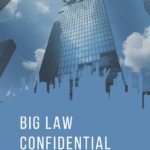A Deep Dive Into The History Of One Of America's Premier Law Firms
Big personalities fuel this mighty trial boutique.
 What happens when you get a bartender from Oklahoma, a senior senatorial aide, and some Supreme Court clerks together? As it turns out, you get a high-flying trial firm. Everyone knows Susman Godfrey’s reputation an elite firm and one of the most coveted jobs any lawyer can aspire to lock down, but the personalities that drive this firm are as interesting as any of the high profile cases the firm pursues.
What happens when you get a bartender from Oklahoma, a senior senatorial aide, and some Supreme Court clerks together? As it turns out, you get a high-flying trial firm. Everyone knows Susman Godfrey’s reputation an elite firm and one of the most coveted jobs any lawyer can aspire to lock down, but the personalities that drive this firm are as interesting as any of the high profile cases the firm pursues.
Earlier this week, Lawdragon published an in-depth account of the firm, digging into the backstories of a number of firm’s attorneys and charting the firm’s evolution from Steve Susman’s shingle in 1980 to a multi-office litigation powerhouse that brought home over $1 billion in verdicts and settlements last year.
As one might expect, the biggest personality at Susman Godfrey may well be Steve Susman himself:

Legal Knowledge Management To Drive Dealmaking
He started out clerking for U.S. Supreme Court Justice Hugo Black and teaching at University of Texas Law School before helming an antitrust case for purchasers of corrugated boxes. He won $550 million and understood that his success should come from his results rather than his effort. There’s a sturdy Chevy truck in that recipe: federal clerkship, Texas and bet on yourself, even if there are today Rauschenbergs hanging on the wall.
Others quickly signed on. Rather than joining the big Texas firms, Lee Godfrey, Parker Folse, Mark Wawro, and a rustle of other smart graduates of, primarily, the University of Texas School of Law, bought into the Susman vision in the early days. It was big and bold, like Susman, and leavened by the elegant Godfrey. The contingent fee work had swagger, but necessitated the firm taking some small, not necessarily good cases to keep the lights on and everyone occupied. The vision was awesome, but the business model was a work in progress.
This is one of the most fascinating moments in a law firm history. Every time I hear about a young firm, I’m interested in the moment. That point where the firm pivots from a catch as catch can venture into a business. It’s what makes or breaks all fledging companies, but it’s a doubly dangerous inflection point for law firms because, as we all know, lawyers aren’t full-time businesspeople and have to constantly shift between their business hat and their lawyer hat.
Thankfully for Susman Godfrey, they found their business lead in managing partner Neal Manne, who Susman wooed with an… interesting pitch.
Manne clerked for 9th Circuit Judge William Norris, then moved to D.C. where he worked at a Big Law firm before eventually becoming Chief Counsel to the U.S. Senate Judiciary Subcommittees on Juvenile Justice and on Constitutional Law. He then became Chief of Staff to Senator Arlen Specter. “During my six years in D.C.,” Manne recalls, “I would periodically get a random phone call from Steve Susman, who I still had never laid eyes on, and he would bark into the phone, ‘Manne, are you ready to get a real fucking job yet?’”
Sponsored

The Global Legal News You Need, When You Need It

Stuck Drafting A Tough Brief? This Tool Can Help.

Legal Knowledge Management To Drive Dealmaking

Stuck Drafting A Tough Brief? This Tool Can Help.
Hey, if it works it works! Manne joined the firm in 1988 and never looked back.
But when it comes to backstories, Bill Carmody’s takes the cake.
There may be no better illustration of the larger-than-life nature of law practice at Susman Godfrey than Bill Carmody, whose own story as an audacious outsider rivals that of his firm. The former Tulsa bartender and Merchant Mariner became Susman Godfrey’s least likely partner – no clerkship – through big trial wins, risk-taking, and wooing of Steve Susman. After practicing for years in Dallas, including at his own firm, Carmody agreed to move to Susman’s fledgling New York office in 2007. What started as a couple cubbyholes somewhere on Park Avenue is today the swankiest office on 6th Avenue, from which Carmody, Jacob Buchdahl, and a host of other stars represent GE, Dan Loeb and, most recently, lead Uber in its battles with Waymo.
Every lawyer should tend bar for a few years. You learn the value of customer service, managing inventory, and telling your clients that you’re not going to give them what they want because it’s a bad idea.
Collectively, the stories of these Susman Godfrey lawyers read like the Bad News Bears — a group of misfits that nobody believed in who made good when they all got together. Except they’re also a bunch of Supreme Court clerks, so it’s more accurate to say it’s a group of misfits that everyone always believed in.
Sponsored


What Do Millennials Think Of Law Firm Life?
Managing partner Neal Manne told me the Bad News Bears reference was apt. “It’s a firm where there’s not a mold people have to fit in.” The firm’s philosophy is to bring in talent and then let that talent shine in whatever manner best suits them.
And that’s certainly been a successful model.
Don’t Mess With Texas: How Susman Godfrey Became America’s Leading Trial Firm [Lawdragon]
 Joe Patrice is an editor at Above the Law and co-host of Thinking Like A Lawyer. Feel free to email any tips, questions, or comments. Follow him on Twitter if you’re interested in law, politics, and a healthy dose of college sports news.
Joe Patrice is an editor at Above the Law and co-host of Thinking Like A Lawyer. Feel free to email any tips, questions, or comments. Follow him on Twitter if you’re interested in law, politics, and a healthy dose of college sports news.







